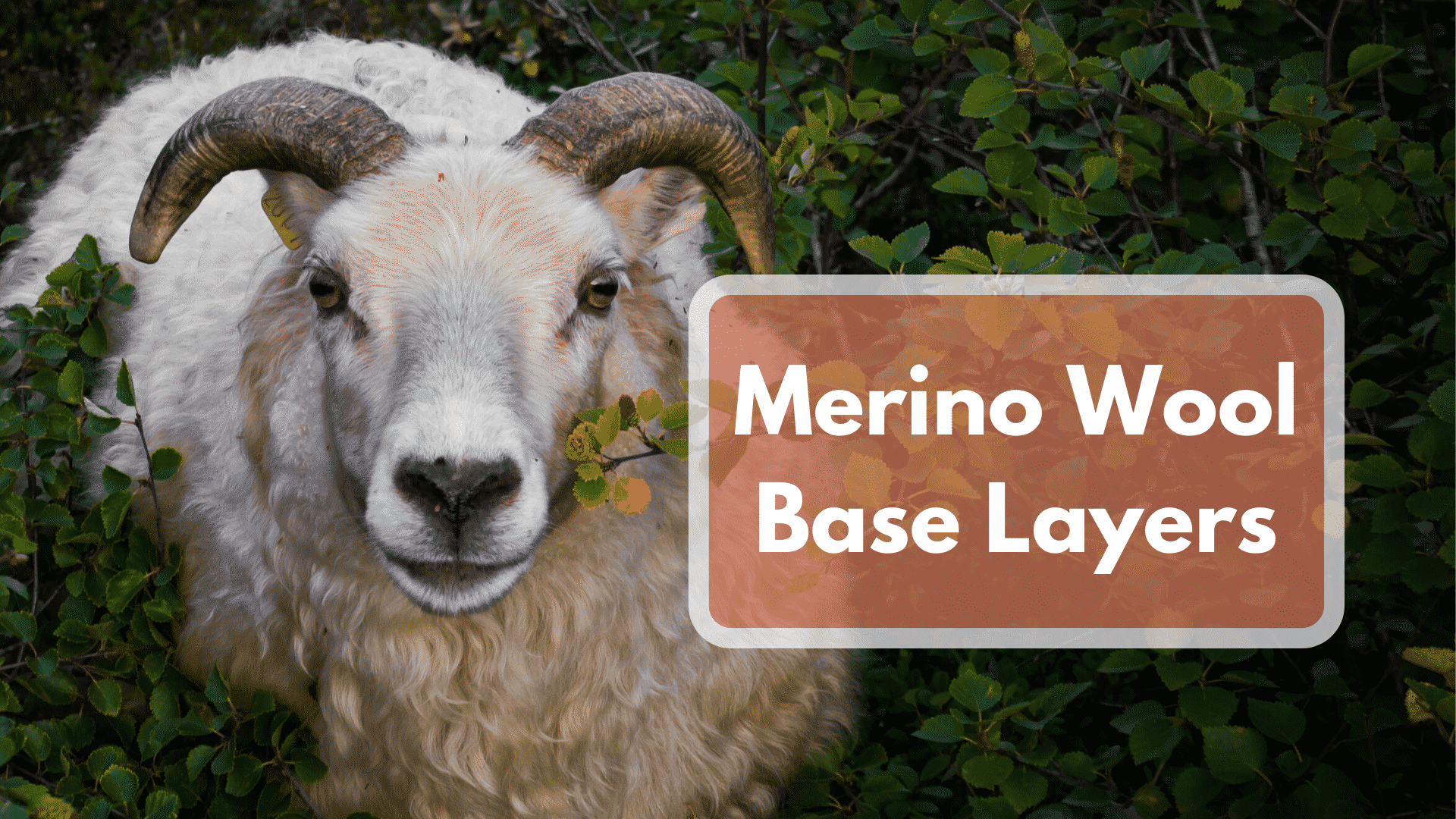I’ve spent decades trying out different synthetic baselayers. Every year synthetic gear gets a little bit better, but it’s nowhere near beating out good old Merino Wool.
Why I Switched Over From Synthetic Base Layers
Don’t get me wrong! There’s a special place in my heart for polyester and other cotton synthetic hybrids. For years I loved wearing polyester/synthetic T-Shirts and Button-up backpacking shirts, but I had two major problems.
I sweat a lot and no matter what base layer I tried sweat always seemed to get through. Then as soon as the wind picked up and there was a gentle breeze I’d be cold. With merino wool I still get wet, but it feels so much better when I stop.(check out the Icebreaker Merino Wool Tech Lite Shirts)
Polyester also had a habit of roughing up my shoulders under my pack. There just wasn’t enough padding under the shoulder strap. Merino stays so much softer, even when wet, and is significantly more comfortable.
Why is Merino Wool The Best Base Layer For Backpacking?
Even though synthetic gear has been getting better, I have been won over by merino wool. You can go with a short-sleeved micro-weight(check out my favorite merino shirt) in summer and long-sleeved mid-weight in winter(my favorite mid-weight shirt).
It’s hard to sort through the studies on moisture transfer and thermal efficiency of synthetic vs wool. Yes, synthetic material quickly dries and you sweat right through, but it has one major drawback. At the first sign of a breeze, you’ll be cold. On the other hand, in merino wool, you’ll be warm in the cold and cool in the heat.
What really won me over is the odor-surpressing capabilities of the better wools on the market. I’ve always been a little skeptical of the miracle claims of merino wool, even if I love their products. Merino wool is supposedly softer than any wool you’ve ever felt, moisture-wicking, thermoregulating, odor-neutralizing and environmentally sustainable.
It sounds way too good to be true, but in my experience it’s held up to the claims. I used to bring one or two extra base layers on a four or five day strenuous trip. I was so worried about soaking my clothes in sweat, but now one set is all I really need.
Choosing Merino Wool Base Layers
Choosing a baselayer really depends on the current conditions and your body type. Are we talking about winter, spring/fall or summer? Are you a thin body type that doesn’t sweat as much or a sweaty mess like me?
Some of us are just better at transferring heat than others. Having a high body thermal index is great in the winter, but terrible in the summer.
Seasonal Considerations
In the Winter, you want a tight-fitting base layer(here’s my choice). You shouldn’t be sweating all that much(maybe a little), but definitely less than the summer. Tight fitting base layers offer the most warmth/weight.
Summer, you want your shirt loose since you will be sweating(here’s my choice). Give your skin room to breathe and let in a nice breeze. Of course, you can go shirtless, but good luck after your skin starts to burn. No es bueno!
Merino Wool Advantages
- Thermoregulating: Even the thinnest merino wool shirt on the market is going to be warmer than cotton and synthetic blends. These same thermogenic properties role into summer. It keeps you warm in the winter and cool in the summer.
- Moisture-Wicking: You won’t have to worry about sweat dripping down your back like in traditional cotton. Wool wicks sweat away from your body keeping you dry, comfortable and warmer than synthetic/cotton alternatives.
- Odor-Neutralizing: Even the sweatiest man won’t smell in merino wool. Even in cheap gear the odor-neutralizing properties are unbelievable.
- Soft: This isn’t the itchy wool you grew up with. Merino wool is one of the softest materials on the market.
- Warm When Wet: Wool is much warmer than synthetics when wet. You don’t have to worry about a light breeze freezing you out.
- Environmentally Friendly: There is no shortage of wool in the world. Wool clothing is frequently seen in other parts of the world.
Disadvantages
By far the biggest disadvantage to buying Merino Wool is the price, but it is so worth it(check out this long sleeve budget merino wool shirt). For the price of one high-quality merino wool shirt you could buy 5 cotton thermals.
If you do some light bargain hunting you might be able to find Merino Wool sweaters on sale at department stores like Kohls or Macy’s. At the end of fall/winter seasonal wool items typically go on sale. Pair that with a 20-30% off coupon and you have a pretty good deal.



